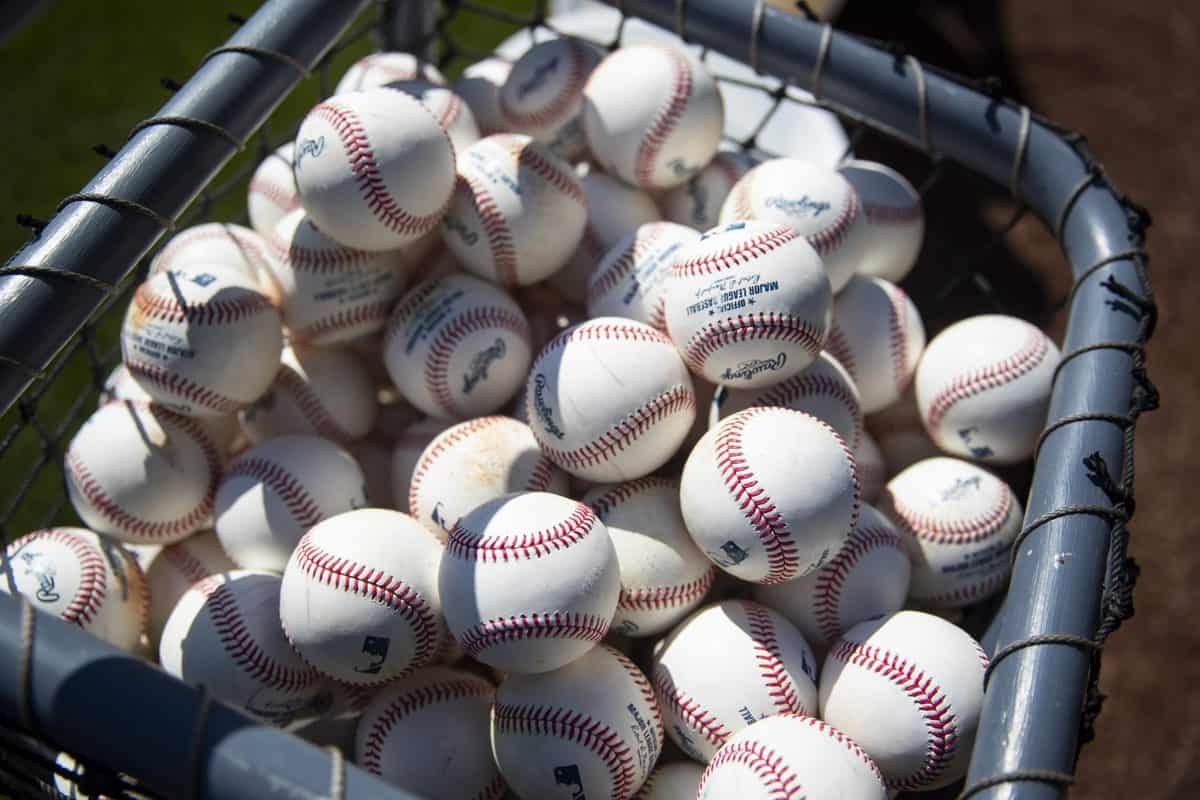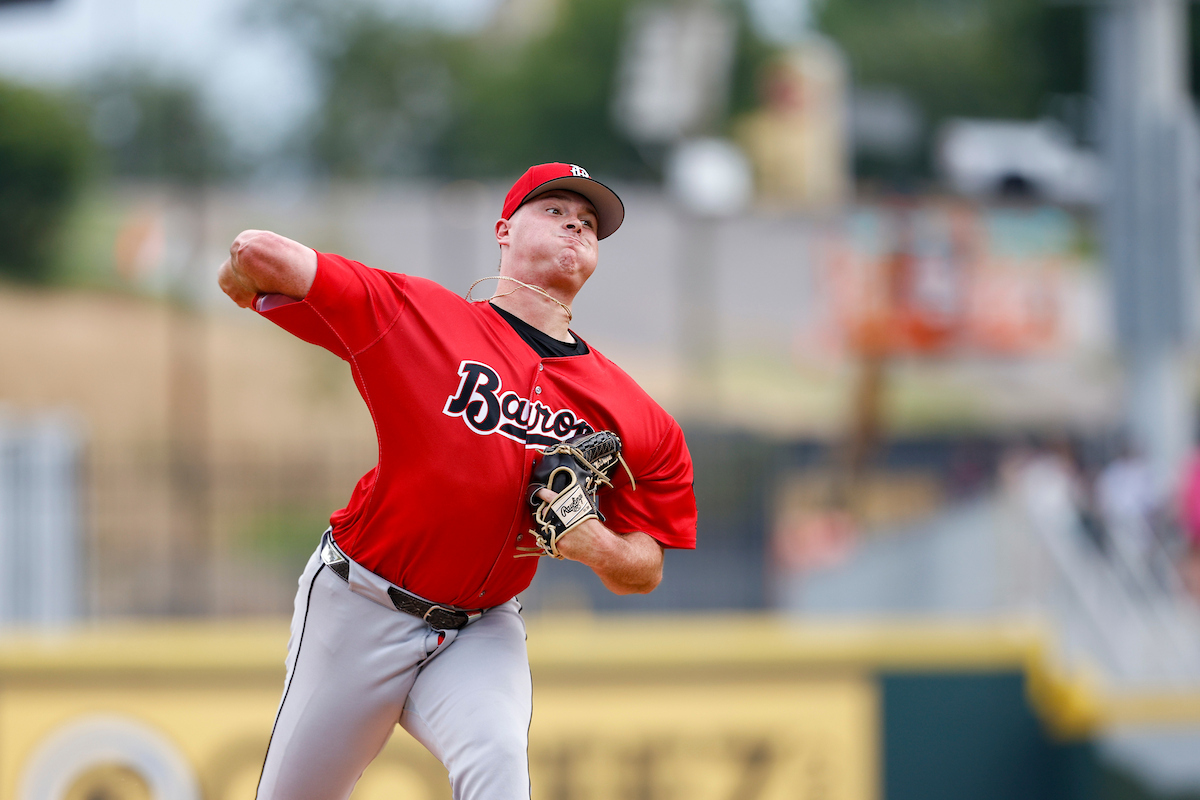The White Sox offense opens a fresh week still leading all of baseball in expected slugging percentage. They're 19th in actual slugging percentage, and moral victories don't count in stopping a seven-game losing streak, so it's cold comfort for burning questions.
Similarly, there's not much relief in noting that the rest of the league is saddled with the same issues; that the league's OPS (.675) is worse than Leury García's previous eight years with the White Sox (.677); that players on other teams are surprised by the deadness of it all.
Players aren't surprised by their surprise, because they've gotten used to the inconsistency of the object that gives the sport its name. This time around, the baseball just isn't carrying. It shows up in first-hand anecdotes, like one James McCann provided to Bob Nightengale...
McCann said that he used to laugh about pitchers trying to convince him there are two different kinds of baseballs, but no longer, saying he can feel the difference, with some baseballs having bigger seams than others.
“There definitely have been moments where I can get a ball from the umpire and can feel the difference,’’ McCann says. “The big thing for me is that the deadened baseball has a bigger seam. The lively balls, or whatever you want to call it, the seams are not as raised.’’
... and it shows up in the data measuring travel:
Through about two weeks so far this season, it appears we are on track for a high-drag, and thus low-homer, year. That dovetails nicely with other studies on the topic that are finding home run rates quite reduced, even adjusting for the weather, as well as other investigations of the baseball and home run rates by two researchers helping MLB study the topic, Alan Nathan and Jim Albert. In raw (non-weather-adjusted) terms, we are seeing the lowest rate of balls leaving the park since 2014, though that will creep up as the summer brings warmer, less dense air for the smashed baseballs to travel through.
There are various theories about why drag has increased -- the implementation of humidors across the league is a new variable -- but the general premise seems like it's beyond debate. The question is how long the White Sox and other teams will be beating their heads against the wall, or whether they're forced to find another way around it. If homers are harder to come by, then stringing together baserunners is the next best option. but the Sox are swinging indiscriminately and have the league's second-lowest walk rate.
Yes, Frank Menechino has noticed.
“We’re getting slider’d to death, we’re getting offspeed to death,” Menechino said. “We’ve been more aggressive, especially on the fastball, and teams have recognized that and now they’re going to try to make us have patience, they’re going to tease us in and out of the zone, especially with offspeed. If you’re not taking your walks, you’re falling into their plan.”
Spare Parts
It would've been a lot easier to forecast success for Kopech's return to the rotation had we known that his curveball would turn into the viable third pitch he'd been searching for. In fact, he's thrown it like his second pitch his last two times out, although partially because he only really needed his fastball last Friday.
With so many no-hit bids lasting to the second half of a ballgame -- and with a few high-profile pursuits abandoned by managerial discretion -- there's a heightened focus on whether starting pitchers will be allowed to do the jobs they'd previously been assigned. As Russell Carleton argues in the BP piece, the league is still working through the repercussions of the relief evolution that started in the 1980s, and now just about every pitcher is defined by his point of diminishing returns.
I’d argue that the idea of a pre-determined end-point to an outing is what really launched the reliever evolution. There were pitchers who didn’t start, but they were failed starters and they pitched like starters. The modern reliever is a new species of baseball player.
We’re now seeing those pre-determined end-points moving into the starting rotation. It might be six innings or 18 batters or 100 pitches, but the effects are going to be similar. With an end in sight, a starter can ration the energy meter to fit the job. It’s a much larger job in terms of innings covered, but there’s an end-point. If end-points were what made pitchers into relievers, then (just about) everyone is a reliever now.
If you want to understand modern pitching usage, you have to understand how those end-points have re-shaped pitching strategy.
Tyler Danish is back in the big leagues for the first time with a team besides the White Sox, which I only noticed when he gave up a go-ahead grand slam to Bo Bichette in Toronto Monday night.
That said, being in a position to give up a grand slam to the Blue Jays represents progress. I figured he was done after 2019, when he posted one of the worst statistical lines I've ever seen at Triple-A Tacoma (15.2 IP, 44 H, 41 R, 37 ER, 9 HR, 9 BB, 10 K, good for a 21.26 ERA). He needed two years in independent ball to wash the stink off, but he's back to being an up-and-down guy, and he's still just 27 years old.
Speaking of former White Sox draft picks, Luis Gonzalez is following in Luis Basabe's footsteps as a Birmingham Logjam alum who is logging playing time in the Giants outfield. He hit his first homer on Monday, and it was a go-ahead two-run shot in the ninth inning.
GONZO 👋 pic.twitter.com/Huctb2C31g
— SFGiants (@SFGiants) April 26, 2022
Following up on Tony La Russa's fear of Luis Arraez's ability to hit a fastball, here's Luke Hooper noting that Byron Buxton covers velocity at the top of the zone better than anybody in baseball.






